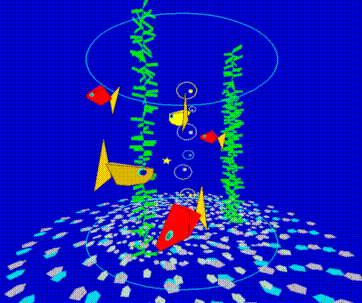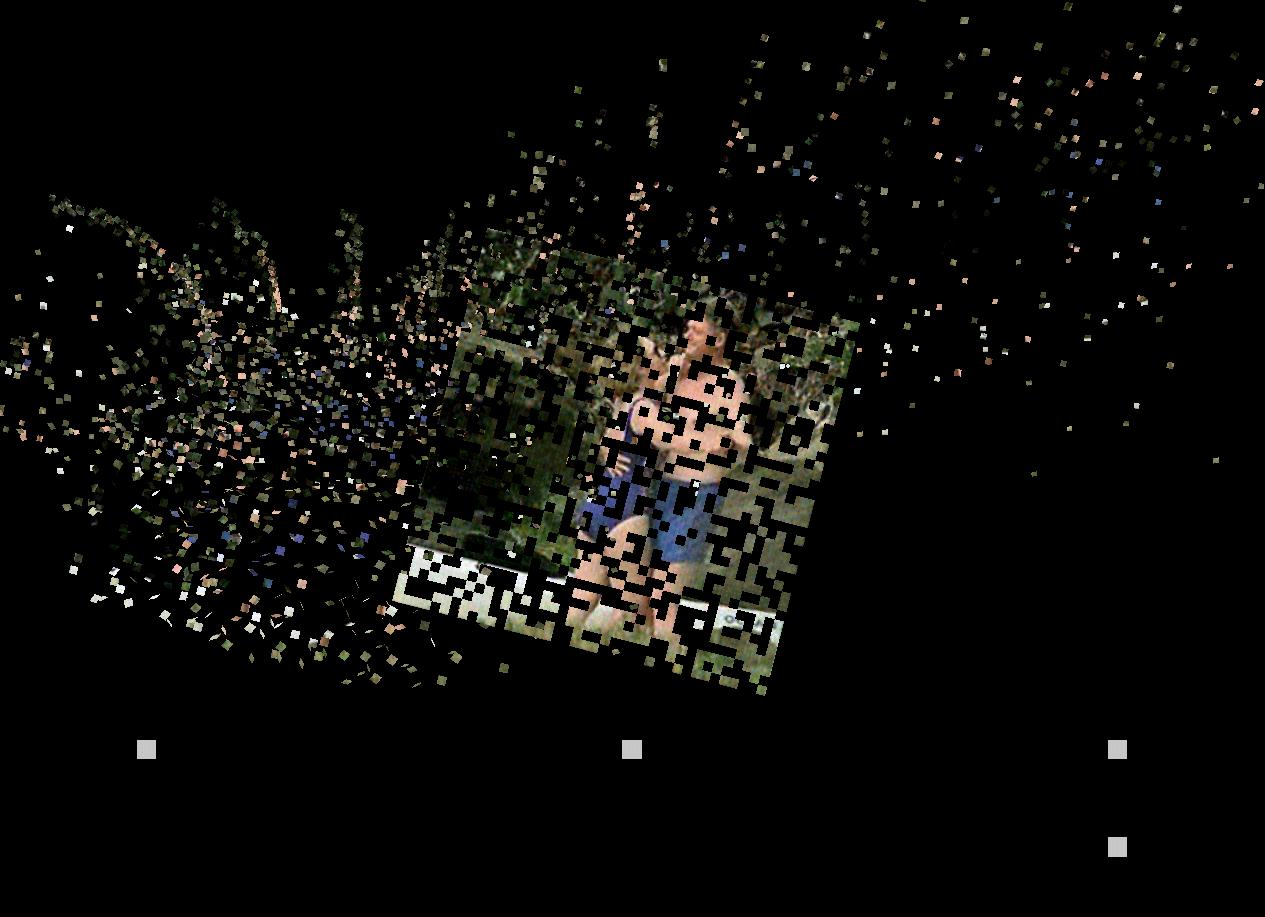
Together with a handful of friends (Rob Myers, Robin Schaufler, Eva Manolis, Bruce Karsh, Ron Fisher, Lievin Leroy, Becky Fuson, Delle Maxwell and Darren Gibbs) I have been trying to push the limits of what this new technology can do since 1985.
Way back then computers were barely networkable, and it certainly wasn't common practice. Our piece that year was a synthetic fishbowl, together with a real world environment to put it in, you know, a nice sofa, a coffee table, some magazines...

Among other novel attributes of Plasm: A Fish Sample were the underlying behaviors that were coded into the fish. They had minds of their own and if left alone would eat each other, reproduce, and otherwise entertain any viewers with unexpected behavior.
A few years later we did a piece that started to use the network. Plasm: A Nano Sample established a portal into a synthetic world. You explored this alternate world by looking through two wheeled monitors that you could roll freely around a 20 by 20 foot room (6 by 6 meters). The entities on the inside of the monitors were simple triangular shapes, but they moved in groups and could do things that were impossible in this world, like swoop down through the floor under your feet. We used a small network in this piece to let the three machines all keep track of each other.
In 1991 we again used a network to let the machines coordinate their activities. This piece, Plasm Above the Drome, allowed viewers to use their whole body to interact with the work and each other. You stepped onto a small surfboard and off you went, crashing through virtual waves or, again exploiting the lack of physical contraints, you could dive down to surf with the underwater fish, or up into the sky with your companions. Three people could be on different surfboards at the same time, each one leaving their mark on the virtual waterscape. We were invited to bring this piece to La Violette, a science and technology museum in Paris.
For SIGGRAPH 1996 we worked up a piece that was to mirror your facial expressions, exploiting the non-physical nature of the machine to render entertaining caricatures. We again used the net to coordinate between multiple machines (a sort of caricature-tele-conference) but the real way the net has influenced this piece was in providing access to cutting edge research done at various institutions around the world. We wanted some face feature extraction software that would run in real time. We asked a few Web indexer sites for help and found just what we needed. We named the piece Plasm: YerMug. The facial recognition software never worked well enough in the crowded SIGGRAPH setting, but fortunatly we had instrumented the stools as well. This got us a quote in the local paper as the worlds first butt driven game.

Our next piece was explicitly political. Plasm: not a crime explored how important it was to be able to wisper sweet nothings to your loved ones, weather across the pillow or the world. We won an award for it at Ars Electronica in 1998 wich made for interesting problems - it was illegal to take secure communication technology out of the United States at that time. Fortunately we had a good lawyer - Cindy Cohen, now with the EFF.

But onto better pictures and the most recent piece:
Plasm: In The Breeze